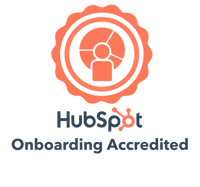How to Track Inbound Marketing ROI

Running an inbound marketing campaign is a daunting task: trying to get your boss to buy in is another.
Inbound marketing campaigns have the potential to be incredibly rewarding, but it can be tricky to convince a numbers-minded boss that it's worth the effort.
One way to argue your case is being able to track a specific return-on-investment (ROI).
There are two primary ways to track your ROI from an inbound marketing campaign: through conversions or goals.
Method 1: ROI Tracking Through Conversions
Compared to other digital marketing efforts, tracking an inbound marketing campaign's success is typically much more straightforward. Generally, your goal with an inbound marketing campaign is to get someone to download a guide, checklist, video or other piece of content.
This means that you'll have a list of conversions - people that filled out the form on your landing page or took the other desired action of the inbound marketing campaign.
This also means you can usually do a few simple equations:
| Calculate Value of a Lead |
| Total Spent on Online Ads ÷ Number of Conversions = Cost to Acquire a Lead |
While this number is useful, you may also find that you generate a few conversions that are not actually relevant customers.
It's also important to look at:
| Calculate Value of a Qualified Lead |
| Total Spent on Online Ads ÷ Number of Sales-Qualified Leads (SQL) = Cost to Acquire an SQL |
Sales-qualified leads are leads that have been reviewed by your sales team and verified to be relevant leads. Calculating this number is useful for figuring out how much money it takes to find relevant leads.
You can then compare these numbers against your existing data to determine if this campaign yielded a good financial return or not.
Another way to calculate the value of a conversion is by finding your conversion rate.
| Calculate Conversion Rate |
| Total Views of Your Landing Page ÷ Number of Conversions x 100 = Conversion Rate |
You can calculate conversation rates from specific sources as well, for example starting with number of clicks on a Facebook ad and then dividing it by number of conversions.
Knowing your conversion rate is useful in comparing against industry benchmarks to determine how well your inbound marketing campaign is performing. WordStream has a comprehensive list on their website of average conversion rates by industry and platform.
Method 2: ROI Tracking Against Goals
The most important element of any marketing strategy is having a clearly defined goal. For most campaigns, the goal is going to be landing conversions.
However, an inbound campaign might include other goals, such as increasing organic website traffic for a search term.
The best way to create goals for inbound marketing is using the SMART goals template. SMART goals are:
- Specific – Your goal needs to be unambiguous and clear.
- Measurable – You should define a concrete way of measuring progress toward your goal.
- Attainable – It needs to be realistically achievable for your team.
- Relevant – Your goal needs to make sense for your business and overall business goals.
- Timely – It’s important to set a time limit on goals to keep them in check.
For example, an inbound marketing goal unrelated to conversions could be:
For every 100 visitors to our landing page, I want 2 to sign up for blog notifications within a 6 month time period.
Using these tactics, you can clearly track ROI for any inbound marketing campaign.
This is useful not only for convincing a skeptical boss that a new marketing move was a success, but also for your own data.
It's critical to be able to tweak your inbound marketing campaign to maximize conversions by having a solid baseline of ROI.
* * *
Free Guide: The Beginner's Guide to Inbound Marketing
In this download you'll find:
- A step-by-step guide on how to create an inbound marketing strategy, including building buyer personas and setting SMART goals
- Sample lead magnets to use in your inbound marketing campaigns
- Step-by-step instructions to create a lead capture form
- A checklist for creating an effective landing page
- Instructions for building automated emails
- Actionable tips for marketing your campaign to a new audience
- Steps for optimizing your campaign for search engines
BizzyWeb is a Minneapolis-based digital marketing and web design agency that helps companies get the high-quality leads they need to grow and thrive. Our tactics include inbound marketing, SEO, advertising, web design, content creation and sales automation. We are an accredited HubSpot Platinum Partner and we offer full-service HubSpot onboarding, enablement and strategy for new and current users.





